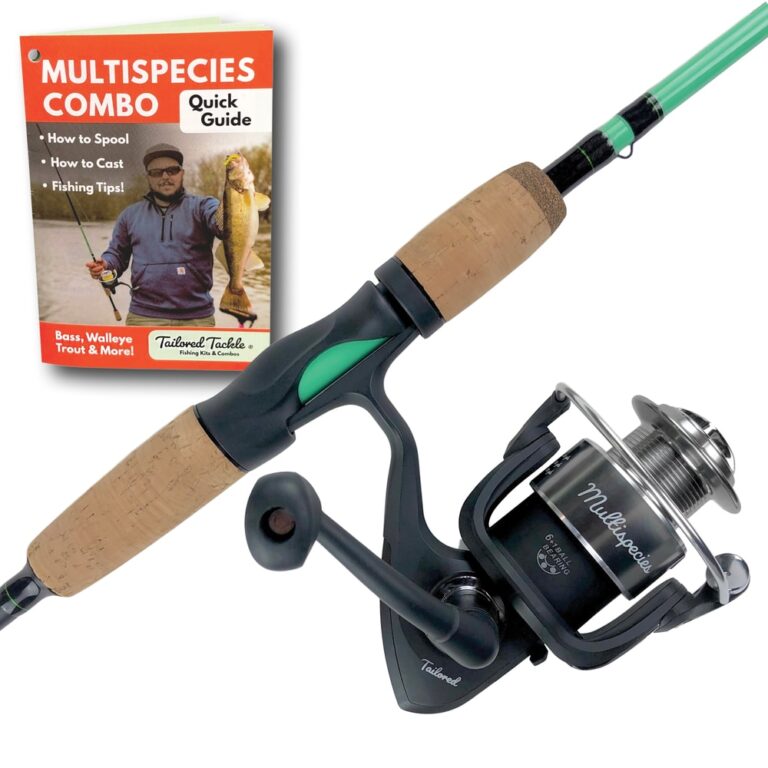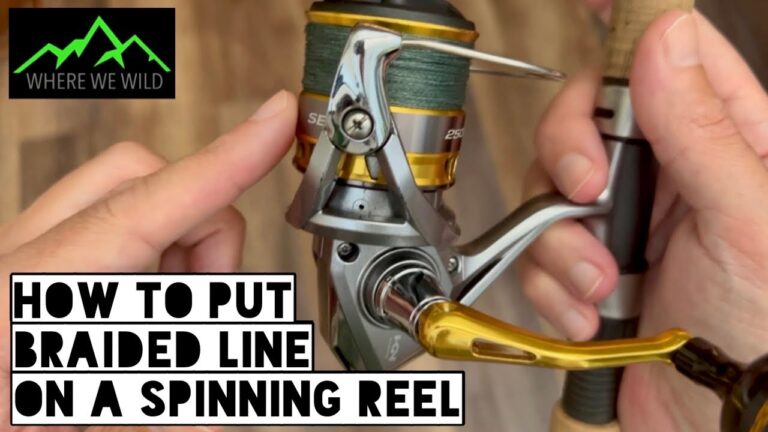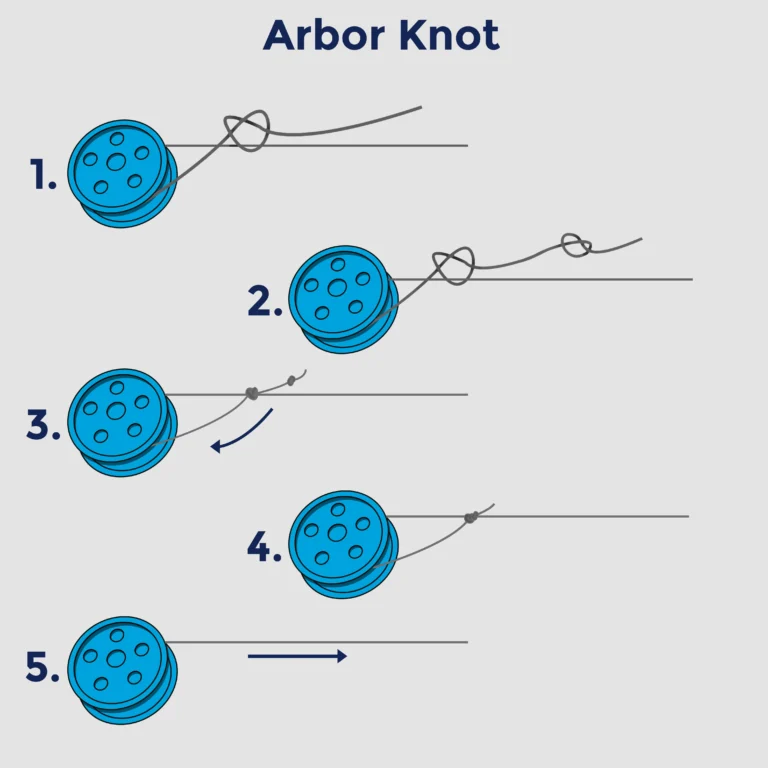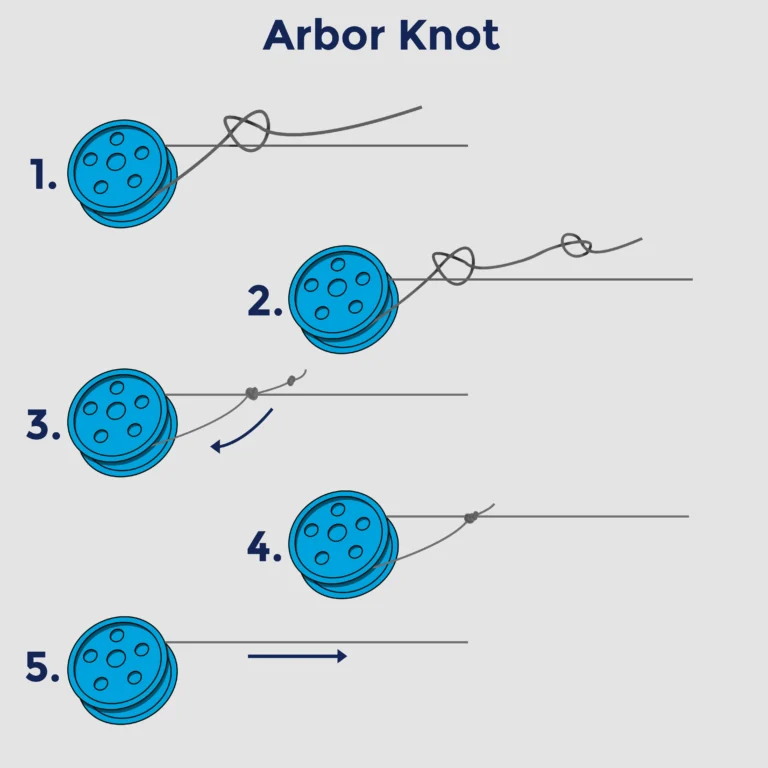How to Clean a Baitcasting Reel
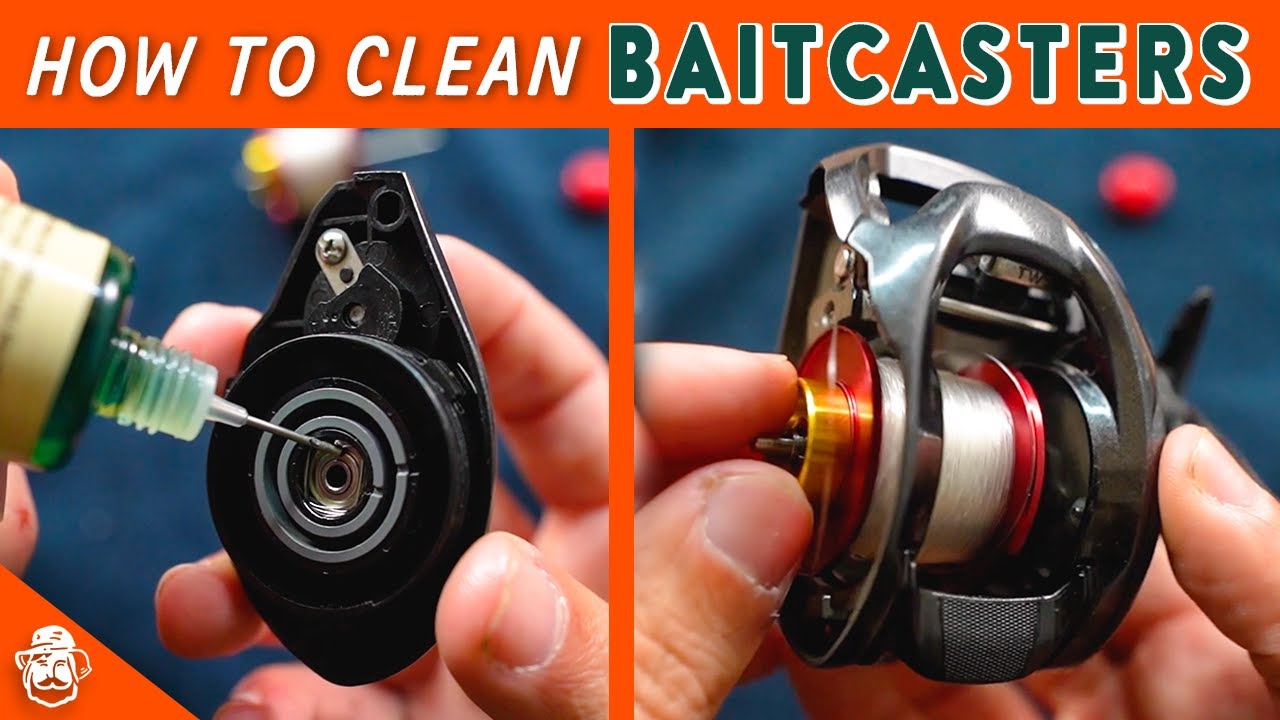
To clean a baitcasting reel, begin by disassembling the reel and removing any dirt with a soft brush. Apply reel cleaner to a cloth and wipe down the parts before lubricating moving components.
Anglers know that maintaining their equipment is crucial, and this includes keeping baitcasting reels in top shape to ensure peak performance. A grit-free, well-lubricated reel can significantly enhance your fishing experience by providing smoother casts and retrieves. Regular cleaning not only extends the life of your reel but also helps prevent the frustrating experience of equipment failure during a big catch.
Whether you’re a weekend hobbyist or a competitive fisherman, knowing the proper maintenance routine for your baitcasting reel is an essential skill. Keeping the components free of debris and well-oiled can make a world of difference on the water, contributing to both successful catches and the longevity of your reel.
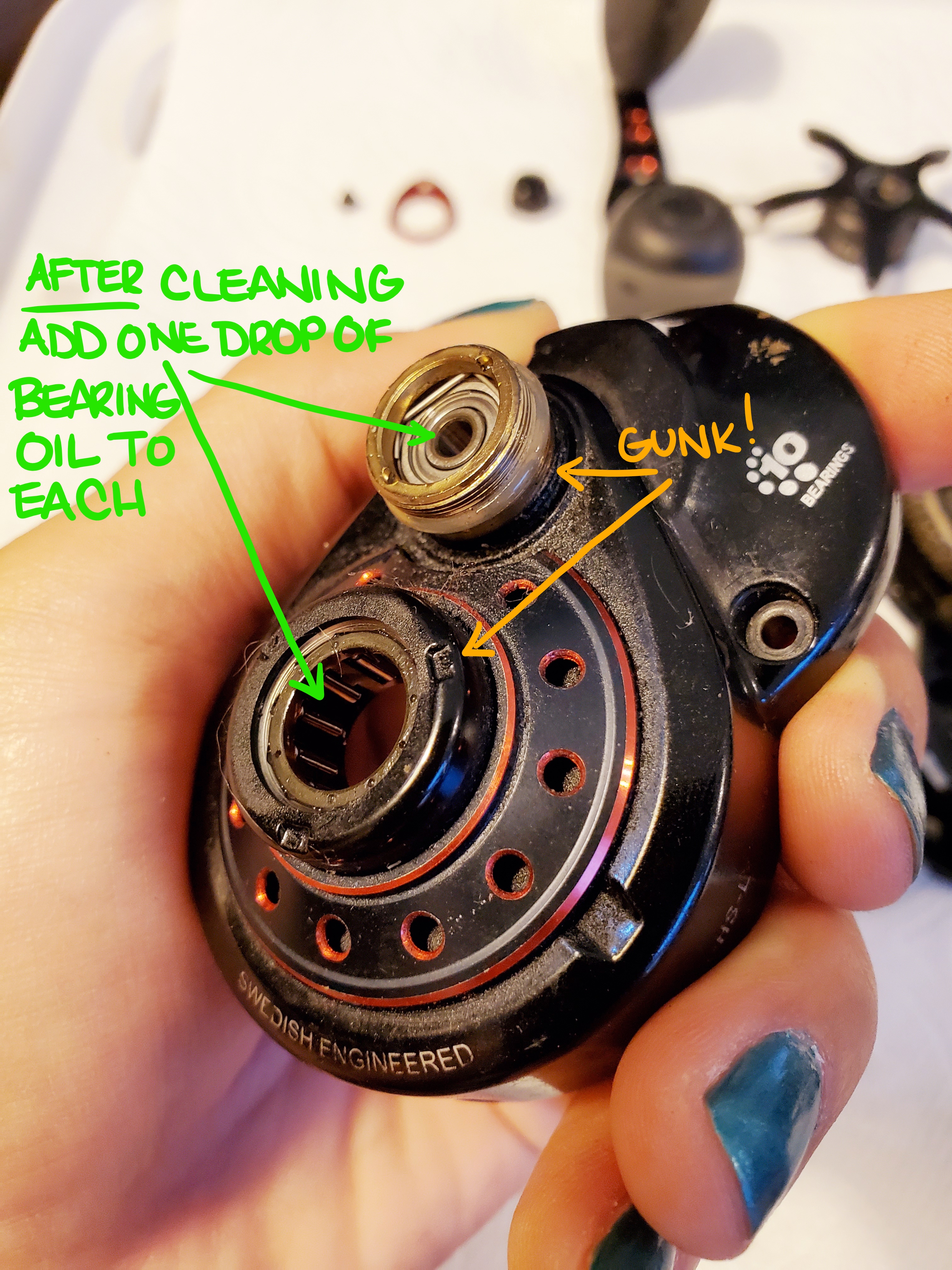
Credit: fishlikeakat.com
The Importance Of Baitcasting Reel Maintenance
Maintaining your baitcasting reel is crucial for optimal performance. Clean reels cast smoother and reel in effortlessly. A well-maintained reel ensures fewer malfunctions and minimizes resistance during use. This attention to detail can lead to more enjoyable and successful fishing trips.
Regular cleaning extends your reel’s lifespan significantly. Dirt and debris cause wear and tear. This can make your reel break sooner. By keeping it clean, you protect your investment. Your reel will last for many seasons, giving you better value for your money. An effective maintenance routine saves you time and expense in the long term.

Credit: www.youtube.com
Initial Preparations For Cleaning
Beginning with the right tools and materials is vital for cleaning a baitcasting reel. You’ll need soft cloths, a soft-bristled brush, reel oil, rubbing alcohol, and cotton swabs. Ensure that screwdrivers match the reel’s screws to avoid damage. A small bowl to hold parts prevents loss.
Next, create a clean, well-lit workspace. A flat surface with a mat or towel will protect the reel and surface. Organizing your tools makes them easy to reach. Make sure the space is free from dirt and sand. Good lighting helps you see small parts and dirt.
Disassembling Your Baitcasting Reel
Disassembling your baitcasting reel is a straightforward process. Begin by removing the reel handle; turn it counter-clockwise until it comes off. Next, take off the spool tension knob by gently unscrewing it. Make sure to store these pieces together so you don’t lose them.
Proceed to carefully remove the side plate by sliding it away from the reel body. This will expose the spool. Lift the spool out of the reel frame and set it aside. Remember to keep small parts like screws in a secure container. It keeps them safe while you clean.
| Component | Storage |
| Reel Handle | Small Bag |
| Tension Knob | Container |
| Side Plate | Near Reel Frame |
| Spool | Clean Cloth |
Deep Cleaning The Components
Cleaning the spool is a crucial step in maintaining your baitcasting reel. First, remove the spool from the reel to access it. Use a soft brush or cloth to gently remove any debris. A lint-free rag dampened with soapy water can help in clearing out tougher grime. Be sure to dry the spool completely before reassembling.
Washing bearings and gears should be done with care. Submerge them in isopropyl alcohol to break down the grease. After soaking, rinse with clean alcohol, then dry thoroughly. Apply a drop of reel oil to each bearing for smooth operation.
For the frame and handle, use a soft cloth and a mild detergent. Wipe them down gently to avoid any damage. Pay special attention to the crevices where dirt accumulates. Keep the handle’s moving parts lubricated to ensure their longevity and functionality.
Lubrication Strategies For Smooth Operation
Selecting the proper lubricant is critical for baitcasting reel maintenance. OPT for oil designed for reels to ensure seamless performance. Silicone-based lubricants generally offer the best results. Avoid using WD-40 or household oils, as they can attract dirt and degrade components.
For applying lubricant, disassemble the reel with care. Apply a small amount of lubricant directly to bearings and moving parts. Turn parts gently to spread the oil evenly. Don’t over-lubricate; excess can attract debris. Reassemble the reel after the application and test the smoothness of movement.
Reassembling Your Baitcasting Reel
Reassembling your baitcasting reel requires patience and attention to detail. Begin by laying out all cleaned parts on a flat surface. Make sure you have all necessary tools within reach. Follow the exploded view diagram of your reel for guidance during reassembly.
Apply a small amount of lubricant to moving parts. Secure the spool into the reel frame, ensuring free movement without wobble. Carefully reattach the side plate, checking that it fits snugly. Tighten all screws progressively; do not force tightness.
| Part | Action | Tip |
|---|---|---|
| Spool | Insert | Check for smooth rotation |
| Gear System | Lubricate | Use manufacturer-recommended lubricant |
| Brake System | Adjust | Test for consistent resistence |
| Handle | Secure | Ensure it is firmly attached |
For troubleshooting common reassembly issues, consult your reel’s manual. Issues like stiff rotation or loose parts often hint at incorrect assembly. Double-check that each component is correctly positioned. If the problem persists, seek advice from a professional or visit the manufacturer’s website.
Testing And Maintaining Post-cleaning
Ensuring your baitcasting reel remains in peak condition, regular testing and maintenance are vital after cleaning. Assess smoothness in casting and reeling, and lubricate components as needed to uphold performance.
“`html After cleaning a baitcasting reel, it’s crucial to test its functionality. Begin by checking the reel’s movement; it should turn smoothly without any grinding noises. Inspect the brake system for responsive performance. Ensure the spool spins freely and that the drag system adjusts without resistance. Regular lubrication after each fishing trip will prolong your reel’s lifespan. A monthly check-up is advisable to spot any potential issues early. Yearly disassemblies by a professional are recommended for a thorough examination and cleaning. Stick to a upkeep plan, and your reel will offer reliable performance on every fishing trip. “`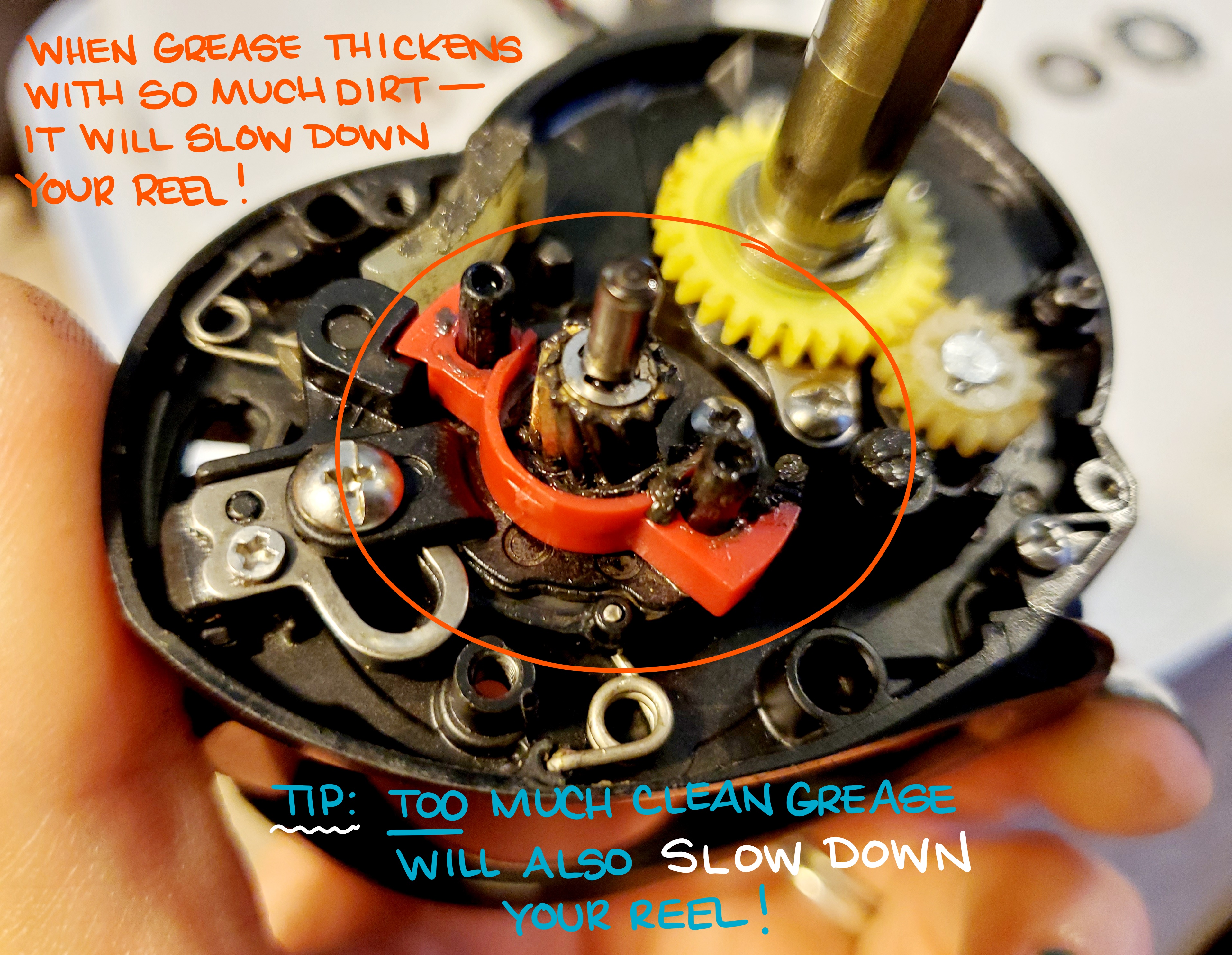
Credit: fishlikeakat.com
Frequently Asked Questions Of How To Clean A Baitcasting Reel
What Do You Clean A Baitcaster With?
Clean a baitcaster using isopropyl alcohol for parts, a soft cloth for wiping down, and a stiff brush for gears. Apply lubricant after cleaning.
What Is The Best Thing To Clean Fishing Reels With?
The best thing to clean fishing reels with is isopropyl alcohol or a mild dish soap and water mixture. Use a soft cloth or brush for scrubbing. Rinse thoroughly and dry before lubricating.
How Do You Lubricate A Baitcasting Reel?
Open the baitcasting reel cover. Apply lubricant to gears, bearings, and spool shaft. Use a small amount to avoid excess. Reassemble the reel carefully. Regular lubrication ensures optimal performance and longevity.
How Do You Get Sand Out Of A Baitcaster Reel?
Begin by gently shaking the reel to remove loose sand. Use a soft brush or compressed air to dislodge any remaining particles. Rinse lightly with freshwater, avoiding high pressure that could push sand inside. Dry thoroughly before reassembling and lubricating the reel.
Conclusion
Cleaning your baitcasting reel is a straightforward task that extends its lifespan and ensures optimal performance. Remember, regular maintenance is key to smooth casts and successful fishing trips. Embrace these simple steps, and your reel will thank you with reliability and efficiency on the water.
Tight lines and happy cleaning!
